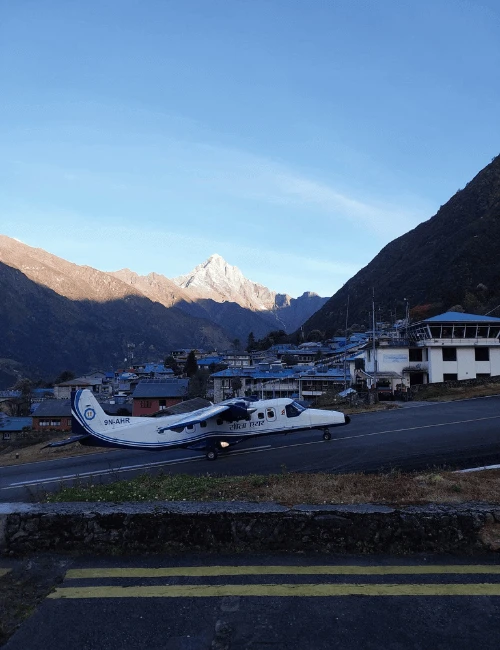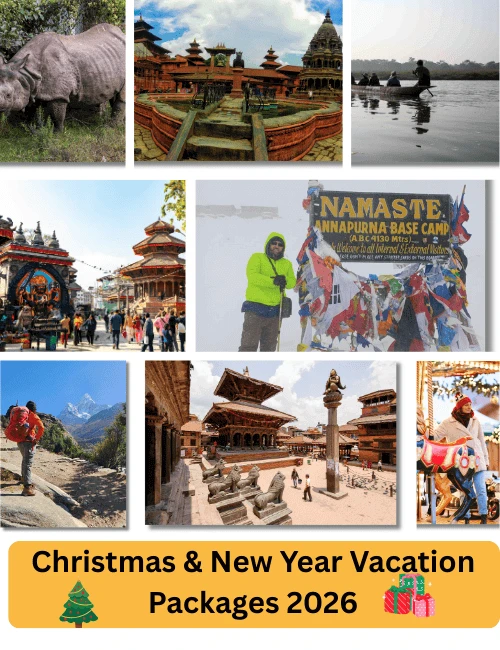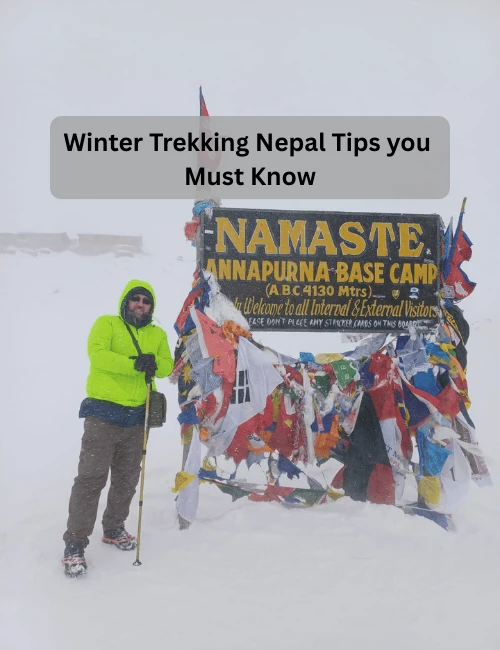Trekking in Langtang Valley is immersing yourself in the hidden paradise of Nepal. However, to enjoy the Himalayan Paradise, there are a few hiking areas in Langtang that offer staggering views of mountains, landscapes, and valleys. To enjoy the hike in the Langtang Region, you must reach up to Kyanjin Gompa, which is the starting point of the Kyanjin RI Hike and Tserko Ri Hike. In this blog, we will explain about the Hiking Places in Langtang Valley.
Hiking Area in Langtang, Tserko Ri & Kyanjin Ri Hike
Top Hiking Area in Langtang: Kyanjin Ri & Tserko Ri Highlights
Tucked away in the northern Himalayas, Langtang offers a hidden paradise for trekkers who seek raw adventure, jaw-dropping views, and rich cultural experiences. Two hikes stand out as the crown jewels of this region: Kyanjin Ri and Tserko Ri. Unlike the heavily trafficked Everest and Annapurna trails, the Langtang Valley provides a more peaceful and intimate encounter with nature and local Tamang communities.
This comprehensive guide dives into the most scenic hiking areas in Langtang, with special attention to the Kyanjin Ri and Tserko Ri hikes. Whether you’re a first-time trekker or a seasoned hiker looking for less crowded trails, these hikes offer unforgettable panoramas, challenging climbs, and an authentic Himalayan experience. Langtang Valley Trek is gaining popularity in recent times among beginners who are seeking the best short treks in Nepal.
Why Hike in the Langtang Region?
The Langtang region stands out as one of Nepal's premier hiking destinations, especially for those seeking natural beauty, cultural immersion, and fewer crowds. Nestled within Langtang National Park, this area is home to lush alpine forests, snow-capped peaks, glacial rivers, and warm-hearted Tamang villages. One of the biggest draws for hiking in Langtang is its tranquility. Unlike the bustling Everest or Annapurna routes, Langtang offers a less crowded trek in Nepal, ensuring a peaceful and more personal experience with nature.
It is also an affordable trekking destination in Nepal, requiring no domestic flights. A scenic 7–9 hour drive from Kathmandu takes you directly to the starting point, making it ideal for short treks or last-minute plans. Langtang is perfect for both beginners and seasoned hikers who want to explore the Langtang hiking trails, such as Kyanjin Ri or Tserko Ri.
The region is rich in Tamang culture, where trekkers can enjoy local food, Buddhist monasteries, prayer wheels, and yak cheese straight from mountain pastures. Nature enthusiasts will love the biodiversity of Langtang National Park, with chances to spot red pandas, Himalayan tahr, langurs, and over 250 bird species. All these elements come together to make Langtang not just a hiking area, but a complete Himalayan experience.
Kyanjin Ri Hike – The Perfect Day Hike in Langtang
Overview of the Trail
Start Point: Kyanjin Gompa (3,870m)
Summit Points: Kyanjin Ri Lower (4,300m) & Upper (4,773m)
Round-Trip Duration: 4–5 hours
Trail Condition: Well-defined but steep, with rocky switchbacks
Kyanjin Ri is an accessible yet rewarding day hike offering panoramic views of Langtang Lirung, Yala Peak, and the glacier that snakes through the valley. It’s a perfect acclimatization hike for those staying in Kyanjin Gompa.
What to Expect
- 360° Panoramas: From the top, you’ll witness a full circle of Himalayan giants.
- Glacier Views: Marvel at Langtang Lirung Glacier just beneath your feet.
- Tamang Prayer Flags: The summit is marked by colorful flags fluttering in the wind.
- Wildlife Encounters: Spot Himalayan griffons and marmots along the ridge.
Tserko Ri Hike – A Challenging Yet Rewarding Adventure
Tserko Ri Trail Details
Start Point: Kyanjin Gompa
Summit Elevation: 4,984m
Hike Duration: 6–8 hours round trip
Trail Condition: Rocky terrain, steep sections, and a long, gradual climb
Tserko Ri is the highest viewpoint in Langtang, often covered in snow during spring and autumn. While more challenging than Kyanjin Ri, it rewards hikers with sweeping views and absolute solitude.
Why Choose Tserko Ri?
- Expansive Vistas: See Ganesh Himal, Langtang Lirung, Dorje Lakpa, and more.
- Less Foot Traffic: Experience solitude at nearly 5,000 meters.
- Snow Hike: Great chance of snow-covered trails in April, May, and November.
- Photographer’s Paradise: Sunrises here are mesmerizing.
- Tserko Ri is ideal for acclimatized trekkers. We recommend doing Kyanjin Ri first before attempting this.
- Kyanjin Gompa – Base for Langtang Hiking Adventures
- Kyanjin Gompa, a spiritual and scenic hamlet in Langtang Valley, serves as the perfect base for both Kyanjin Ri and Tserko Ri. It offers:
- Teahouse Lodges: Cozy accommodations with yak cheese, momos, and dal bhat.
- Cultural Insight: Explore ancient monasteries and Buddhist prayer walls.
- Glacier Walks: Short side hikes to Langtang Lirung Glacier.
- Yak Cheese Factory: Visit the local factory and taste fresh yak cheese.
This picturesque village is where your adventure begins. Take a rest day here and prepare for the climbs ahead.
Best Time to Hike in Langtang
Choosing the right season can greatly enhance your experience when hiking in the Langtang region. The best time to hike in Langtang is during spring (March to May) and autumn (September to November). These months offer the most stable weather, crystal-clear mountain views, and ideal trekking conditions for popular trails like the Kyanjin Ri hike and the Tserko Ri hike.
In spring, the trails come alive with blooming rhododendrons and vibrant wildflowers, providing a colorful contrast to the snow-draped Himalayan peaks. This season is perfect for photographers and nature lovers who want to capture the scenic beauty of the Langtang hiking trails. Autumn, on the other hand, is known for its dry weather and exceptional visibility. After the monsoon, the air is crisp and clear, making it an excellent time for those seeking the best views from Langtang viewpoint treks.
The monsoon season (June to August) brings heavy rainfall, slippery trails, and an increased risk of landslides, making hiking dangerous and less enjoyable. Meanwhile, winter (December to February) transforms the landscape into a snowy wonderland, but only experienced trekkers equipped with winter gear should attempt hikes like the Tserko Ri during this period.
For most hikers, spring and autumn provide the safest, most enjoyable, and least crowded trekking experiences in Nepal, especially for those exploring the top hiking areas in Langtang.
Permits Required for Langtang Hiking
To hike in Langtang National Park, you need:
Langtang National Park Permit: NPR 3,000 (approx. USD 30)
TIMS Card: NPR 2,000 (approx. USD 20)
Both are available in Kathmandu or through a registered trekking company. Always carry these permits for checkpoints along the trail.
Is Langtang Suitable for Beginner Trekkers?
Absolutely! Langtang is widely regarded as one of the most beginner-friendly trekking regions in Nepal. Its relatively short duration, moderate elevation gains, and non-technical trails make it an ideal choice for those new to Himalayan trekking. Among the most accessible hikes is the Kyanjin Ri hike, which can be completed in just a few hours from Kyanjin Gompa. With moderate fitness and acclimatization, even first-time trekkers can comfortably reach the summit for panoramic Himalayan views.
While the Tserko Ri hike is more demanding due to its higher elevation, it remains achievable for fit beginners, especially if they’ve acclimatized properly with a few days at Kyanjin Gompa or by first tackling Kyanjin Ri. Another reason Langtang is ideal for novices is that it doesn’t require technical climbing skills—just a good pair of hiking boots, layered clothing, and a passion for nature. The presence of well-established Langtang hiking trails and frequent teahouses along the way ensures trekkers have access to food, water, and shelter. To enrich the journey, hiring a local trekking guide in Langtang is highly recommended. Guides not only enhance safety but also share cultural insights about Tamang traditions, Buddhism, and the flora and fauna of Langtang National Park.
Whether it’s your first trek or a stepping stone to bigger Himalayan adventures, Langtang offers a safe, enriching, and memorable introduction to trekking in Nepal. Local guides enrich your experience with cultural insights and ensure safety.
How to Get to Langtang from Kathmandu
By Road: Kathmandu to Syabrubesi via public bus or private jeep (7–9 hours).
Trek Route: Syabrubesi → Lama Hotel → Langtang Village → Kyanjin Gompa
There are no flights needed, making Langtang a budget trekking destination in Nepal.
Packing Tips & Essentials for Kyanjin Ri and Tserko Ri
To fully enjoy your hike in one of the best hiking areas in Langtang, packing the right gear is crucial. Whether you're ascending the more accessible Kyanjin Ri hike or challenging yourself with the high-altitude Tserko Ri hike, having the proper essentials will enhance your safety and comfort.
Start with sturdy waterproof hiking boots with good ankle support, as the terrain includes steep rocky sections and occasional snow. A lightweight down jacket, windproof shell, and layered clothing are key for temperature changes, especially during early morning ascents. Don't forget a headlamp for pre-dawn hikes and trekking poles to help with steep descents.
Hydration is vital, so carry a reusable water bottle and either water purification tablets or a portable filter. For energy on the trail, bring snacks, electrolyte sachets, and dried fruit. The sun at high altitudes can be harsh, so pack sunscreen, sunglasses, and a wide-brimmed hat.
A camera or smartphone with spare batteries is a must to capture the incredible vistas on these Langtang viewpoint treks. Other useful items include a GPS navigation app (like Maps.me or Gaia), a power bank, a small first-aid kit, and lip balm.
If you're hiking during late autumn or early spring, microspikes or crampons may be necessary for icy sections, especially on the Tserko Ri trail. Packing smartly ensures you're prepared for the variable weather and terrain that make Langtang one of the most rewarding trekking destinations in Nepal.
Where to Stay During Langtang Hikes
Accommodation is in teahouses along the trail and in Kyanjin Gompa:
Basic but Comfortable: Twin beds, shared bathrooms
Cost: USD 5–15 per night
Meals: Dal bhat, Tibetan bread, yak cheese, fried rice
Support the local economy by eating at your host teahouse. It also ensures warm hospitality and local stories by the fire.
FAQs – Hiking Area in Langtang
Is Langtang Valley safe after the earthquake?
Yes. Trails and villages like Kyanjin Gompa have been rebuilt and are safe for trekking.
Do I need a guide for Kyanjin Ri or Tserko Ri?
While not mandatory, a guide ensures safety and enriches your understanding of local culture.
What’s the altitude sickness risk?
Mild symptoms like headaches may occur above 3,000m. Acclimatize at Kyanjin before Tserko Ri.
Can I hike Langtang in 5 days?
Yes, but it's fast-paced with some difficulty. The ideal duration is 7–9 days for proper acclimatization.
Is there Wi-Fi or a mobile signal at Kyanjin Gompa?
Kyanjin Gompa has limited Wi-Fi and NTC/NCell signals, but don’t expect full connectivity.
Conclusion: Why Kyanjin Ri and Tserko Ri Are Langtang’s Crown Jewels
If you’re dreaming of breathtaking views, quiet trails, and authentic cultural experiences, Langtang is calling. The hikes to Kyanjin Ri and Tserko Ri are more than just climbs—they're a journey through spirituality, solitude, and Himalayan majesty.
Whether you're a seasoned hiker or a curious traveler, Langtang offers something truly unforgettable.
Ready to Explore Langtang?
Book your Langtang adventure with Mountain Eco Trails for tailor-made itineraries, experienced guides, and eco-friendly trekking in Nepal. Feel Free to contact us via email or WhatsApp at +9779849790153



.webp)


